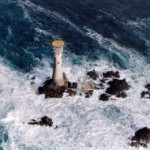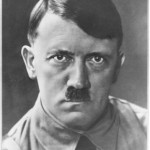 The development of the steamship led to the decline of the shipbuilding industry but encouraged the export of perishable goods. The harbour was enlarged and the export of grapes and flowers grown in vineries around the island began. This was followed later by the export of tomatoes, which in the early 19th century were thought to be inedible. However, in the 1870s reports in medical journals suggested that the tomato had medicinal qualities and they became fashionable. Many growers changed from growing grapes to growing tomatoes and with the export of main crop tomatoes in 1884 the Tomato industry was born.
The development of the steamship led to the decline of the shipbuilding industry but encouraged the export of perishable goods. The harbour was enlarged and the export of grapes and flowers grown in vineries around the island began. This was followed later by the export of tomatoes, which in the early 19th century were thought to be inedible. However, in the 1870s reports in medical journals suggested that the tomato had medicinal qualities and they became fashionable. Many growers changed from growing grapes to growing tomatoes and with the export of main crop tomatoes in 1884 the Tomato industry was born.
The 20th century brought new opportunities and further conflicts. The first Muratti football match between Guernsey and Jersey took place and still provokes strong feelings on both sides today. The last witchcraft trial took place in 1914 and the accused, Mrs Lake, was given 8 days for disorderly conduct.
Guernseymen fought bravely in the First World War, winning a commendation at Cambrai, but The Royal Guernsey Light Infantry suffered so many casualties at Lys in 1918 that it had to be disbanded and hardly a family in Guernsey was left unaffected. The period between the wars saw many new developments designed to bring Guernsey into the 20th century. A new jetty was built at the harbour, a reservoir constructed to provide the expanding horticultural industry with water, an airport established to speed up links with the mainland and cinemas opened, providing a new style of entertainment.
 The outbreak of war in 1939 was of immense concern to the Islanders. As Germany moved inexorably through the Low Countries and France it became clear that Guernsey would not be able to resist. Arrangements were made to evacuate the population and many left for the UK abandoning their homes and businesses. Guernsey was demilitarised but unfortunately the lorries with tomatoes waiting to be loaded onto ships looked too much like ammunition trucks and in June 1940 the harbour was bombed with the loss of 29 lives. The island was occupied by the Germans on July 1st 1940 and so began five years of shortages and disruption as the island became increasingly cut off from England and then France. Finally Germany was defeated and Guernsey liberated by British forces on May 9th 1945.
The outbreak of war in 1939 was of immense concern to the Islanders. As Germany moved inexorably through the Low Countries and France it became clear that Guernsey would not be able to resist. Arrangements were made to evacuate the population and many left for the UK abandoning their homes and businesses. Guernsey was demilitarised but unfortunately the lorries with tomatoes waiting to be loaded onto ships looked too much like ammunition trucks and in June 1940 the harbour was bombed with the loss of 29 lives. The island was occupied by the Germans on July 1st 1940 and so began five years of shortages and disruption as the island became increasingly cut off from England and then France. Finally Germany was defeated and Guernsey liberated by British forces on May 9th 1945.
There was an urgent need to rebuild the island’s infrastructure after the war and in 1951 the Tomato Marketing Board was set up to get the industry going again. Children and families returned from their enforced stay in the UK but many of them had lost their local language and culture. Horticulture was still the bedrock of the Island economy and continued to be so until competition from abroad and rising oil prices forced a steady decline in the late 60s & 70s
Light industry was introduced into the island when Tektronix brought its business to Guernsey in 1958 but it was the formation of the Investment Trust of Guernsey in 1959 that established the basis of today’s economy as the finance industry was born.
Today the island still attracts tourists and you can still see flowers and the odd tomato growing commercially in greenhouses but it is the Finance Industry that prevails. The Island’s offshore status has encouraged unprecedented growth. The traditional way of life is gradually disappearing and with little legislation to protect its heritage the island has been left vulnerable. But with its beautiful scenery and long history the Island will doubtless survive, taking its place in the world and its affairs as it has done for thousands of years.